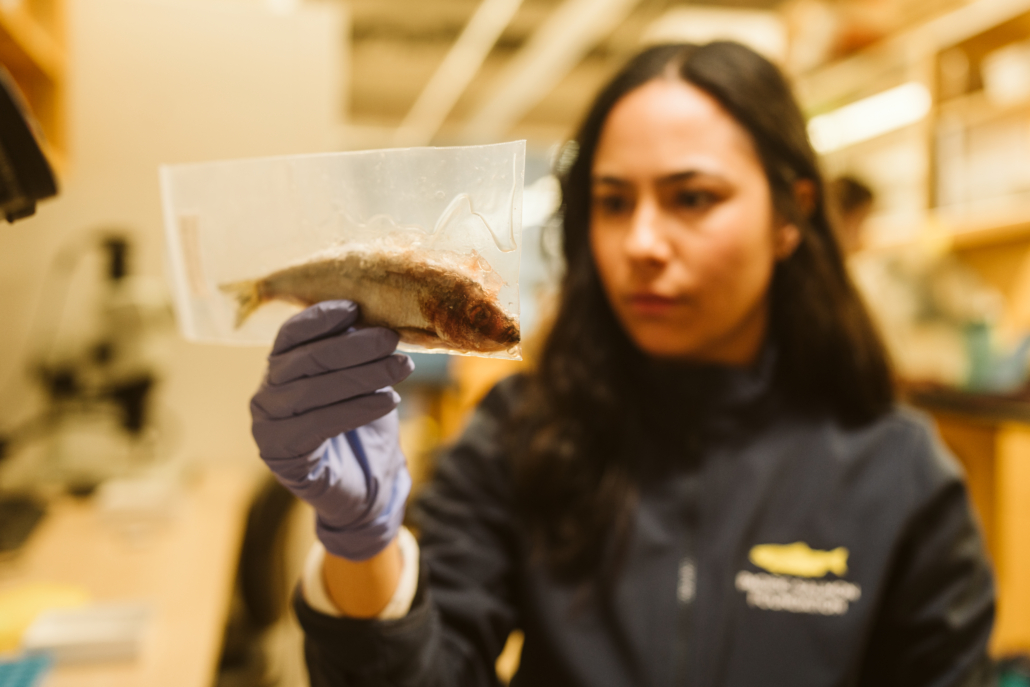Biomass assessment and otolith-based detection of adult non-migratory herring in the Strait of Georgia
At the end of the twentieth century, First Nations, community stewards, and fishers reported the disappearance of adult herring that were formerly abundant in the Strait of Georgia during the summer. Traditional ecological knowledge suggests that herring had previously been available to Coastal First Nations year-round. In the last 10 years, anecdotal accounts suggest at least a partial return of these fish, with large, primarily deep-water schools of adult ‘resident/non-migratory’ herring consistently observed through summer in the Northern Strait of Georgia.
This second activity aims to develop the ability to track changes in the abundance of resident/non-migratory herring in the Strait of Georgia, and in turn, understand factors that may be driving these changes and implications for salmon and the rest of the ecosystem.
The first part of this activity develops innovative means to survey herring abundance and biomass using scientific echosounders validated with drop cameras and jigging. The goal of the acoustic surveys will be to derive minimum biomass estimates for Strait of Georgia resident/non-migratory herring. The team will also build the capacity of partner nations to carry on the techniques and become actively engaged in marine fisheries research and assessment. The second part will employ a novel otolith microchemistry tool to compare residents and migrants, allowing identification of factors controlling abundance of resident herring.

